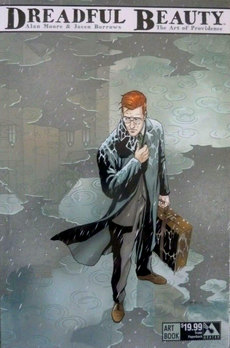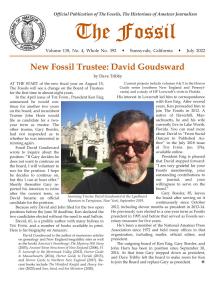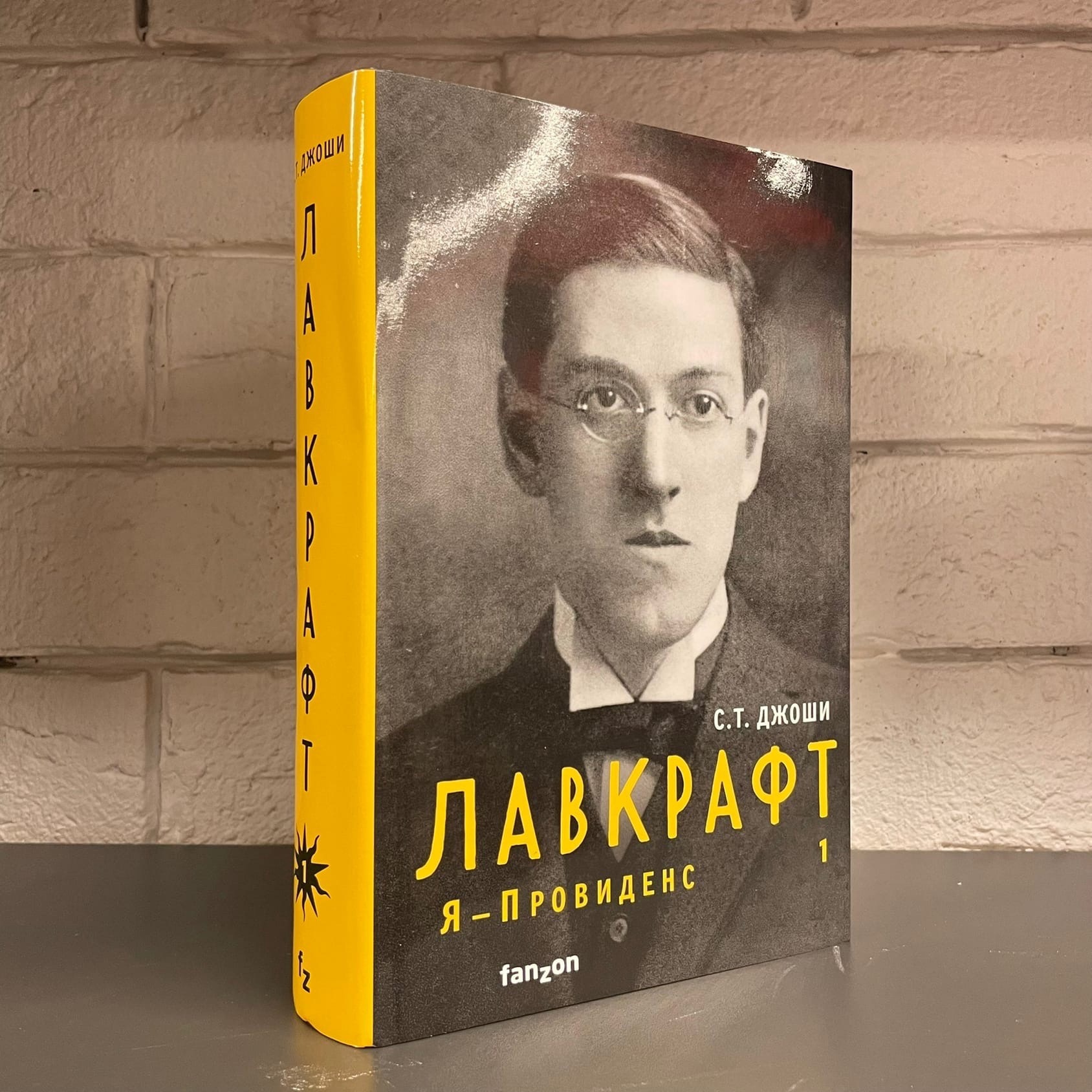More notes on the volume of Lovecraft letters, Letters with Donald and Howard Wandrei.
We open in late 1927.
p. 172. Loveman recommended to Lovecraft a “young vagabond Frenchman, Jean Recois” who Loveman had picked up in New York. Lovecraft in turn suggested him to Wandrei.
p. 180. Lovecraft enjoyed the big-budget movie The Thief of Baghdad. This would have been a re-run of the 1924 Douglas Fairbanks version, probably as part of a double-bill of two similar older movies.
p. 185. After hearing a public lecture at Brown on the subject, Lovecraft was delighted to learn that Greece was still somewhat pagan. At least in placid watered-down outward forms, as observed first-hand by an expert on the matter. He writes… “The peasants worship their old gods at their old shrines, under saint’s names.”
p. 188. Until late 1927, Belknap Long and family were living at 323 West End Ave., New York City. They then had to move. I can find no picture of the site, but it would have been here that Lovecraft visited in the mid 1920s while living in the city.
p. 195. On the visionary artist John Martin. By late 1927, Lovecraft had seen… “excellent collections of his engravings on two occasions”.
p. 198. Wandrei met and liked Lovecraft’s aunts, and wished in a letter that he could have the same life. He appears to imply that they had been left ‘provided for’ in terms of an income that supplied a genteel lifestyle, and that they did not need to work.
p. 198. Lovecraft read “a fine study of hallucinations by Henri Beraud” sometime in the winter of 1927/28. By the mid 1920s Beraud was one of France’s best-selling literary novelists, also a magazine editor. S.T. Joshi has edited his novel Lazarus (1924) in English, but there appears to be no “study of hallucinations” among Beraud’s books… unless that novel encompasses such things? Apparently it is the melodramatic story of a lost memory and double-personality, akin in broad idea to “The Shadow Out of Time”. If that novel is not the “study of hallucinations” meant, then perhaps Lovecraft had encountered a long translated newspaper article or book chapter on the topic? I can find no-one referring to such, though there are hints Beraud influenced the surrealists. His vivid travel writing book Ce que j’ai vu a Rome (‘What I saw in Rome’), “based on his newspaper articles”, would have appealed to Lovecraft. It… “captures the atmosphere that characterized Italy, in particular Rome, in the late 1920s.” This book is apparently the source of the French intellectual phrase “hallucination historique”, originated by Beraud. But the book was not published until October 1929, and anyway appears to have never had a translation.
p. 199. He recalled, many decades later, that as a fifteen year-old he had enjoyed “The Barge of Haunted Lives” in the proto-pulp All-Story magazine in 1905. Published in book form in 1923. A contemporary review doesn’t hold out much hope that it’s a lost classic…

p. 199 and 202. He expressed a desire to meet Prof. Voss of Heidelberg, whom be believed to be the real and substantive creative force behind the contested English translation of The Monk and the Hangman’s Daughter, and true appreciator of the dense dark Bavarian forests. Possibly a hook on which a Mythos writer might hang a tale or two?
p. 211. The novelist Everett McNeil is… “getting to be a first-rate correspondent”. Sadly the McNeil-Lovecraft correspondence has been lost.
p. 217-19. Wandrei ended up living in the notorious Red Hook, New York City, for a time. By September 1928 the lad has had enough and was planning to leave.
p. 220. In September 1928 Lovecraft was practising a proto-psychogeography in Providence… “Have also made many Machen-like voyages of discovery through strange Providence streets — including whole neighbourhoods whose very existence I had never suspected … It is astonishing how many obscure and labyrinthine nooks and corners … unknown to even lifetime inhabitants until chance or deliberate exploration brings them to light.” The word “chance” appears to suggest he consciously undertook a dérive-like wandering, inspired by Machen.
p. 220. He read the “French and Asquith” ghost anthologies in November 1928. The former was an anthologist whom Lovecraft had met in person, at least once, at Eddy’s book shop in Providence. A “peppery-voiced” old man.
p. 223. Lovecraft definitely saw the Henry Peck exhibition of local drawings in Providence in November 1928.
p. 225. There was what he called a “prevailing pandemic” in January 1929, though he states he suffered only a “typical cold”. But with Loveman’s aid he still managed to get to Marblehead in winter, and there they enjoyed the lack of tourists. Presumably the “pandemic” had reduced these even further.
p. 230. There is a hint that Lovecraft’s Hell’s Kitchen novelist friend Everett McNeil was a war veteran. That much is known (see my biography of McNeil). But here we have a hint that he had once been connected with the Navy. Since in his old age he was able to be treated at the Naval Hospital.
p. 232. In Providence, Jake’s was located… “down by the Great Bridge”.
p. 241. Lovecraft briefly corresponded with the author of Pilgrims Through Space and Time: Trends and Patterns in Scientific and Utopian Fiction (1947), the first well-known and substantial survey by an academic of the pre-history and early history of science fiction. It is currently online in a 1972 reprint. Oddly enough there was also a dissertation written in Providence at Brown, surveying the German side of the proto-SF field, which apparently pre-dated Pilgrims. But only an extract was ever published, and this pioneering German study was unknown to later German writers on the same topic.
p. 249. Of young Derleth… “he actually believes in the supernatural”. Lovecraft modifies this in a late letter to Petaja, to be found in the same book. There… “Derleth believes in telepathy but not the supernatural.” Lovecraft, again writing to Petaja, thought telepathy “not outside the realm of possibility” in the mid 1930s. Though he notes the lack of support from men of authority, and the current lack of plausible evidence.
p. 250. Lovecraft’s story “Whisperer” sold for a handsome $350, on first submission. Unusually it was written in May and on a warm trip to the south, “piecemeal between snatches of revisory work”. Quite unlike his normal winter-working practices, then. This perhaps helps explain some of my thoughts and mis-givings about it, following my recent re-hearing in audiobook. It was, I now suspect, something of an experiment.
p. 252, 253, 265. Various extended musing on his ‘ancestral’ memories of deep woods, forests, inc. “vast-boled, low-branching, palaeogean forests”. One for some future article appreciating his writings about gardens, dream-gardens, flower-shops, conservatories, verdant tended landscapes, his pastorals and the like.
p. 253. “Goat Rock” was a favourite sitting spot in Quinsnicket. This is still there apparently, or at least a rock of that name. Some of “his” rocks in the park were moved or removed by WPA work in the 1930s, I seem to recall. But Goat Rock was “west of Table Rock Road” according to a WPA guidebook of the period. There was an “Old Quarry behind Goat Rock” according to a modern guide, which may interest Mythos writers.
p. 255. The popular serving-man “Domingo” at Jake’s was Portuguese.
p. 253, 256. Lovecraft had never seen the aurora (‘northern lights’), though he was sometimes told by others that it had been sighted in Providence. But always too late to see it himself.
p. 257. [one of two of] “my own most terrifying memory-phantoms are traceable to … an illustration in Robinson Crusoe.” Presumably this is to be found in an edition circa 1875-1900, although today it would probably take a Crusoe expert and collector to identify the exact edition and most likely illustrations.
The letters move into 1931:
p. 161. Lovecraft found a new bakery, the Lonsdale Bakery, which at the point of writing had been patronised since Autumn/Fall 1930. Google Books suggests this was a budget chain expanding out of nearby Saylesville where it had been established by the early 1920s. Occasionally he ate out at “The Plymouth” in Providence, and later he found an even cheaper place which served a good three-course meal for 25-cents. His budget for food seems to be going downhill at this point.
p. 265. There is another mention of the novel that Long was writing and which was based on memories of “the gang” in New York City in the mid 1920s. This is rather vaguely described by Lovecraft as “psychological or aesthetic” in approach, but at least that tells us that it was not a monster-shocker pulp mystery.
p. 271, 273. Only in September 1931 was pumped “steam heat” installed at Lovecraft’s home in Barnes St. Formerly there had been a winter “hot-air furnace” (presumably convection) which only heated part of the house, and the third floor was left unheated.
p. 285. He gives the impression of bearing up under the weight of the Great Depression, but by the third winter the general mood and dim prospects are obviously starting to get to him. He talks of his own severe “nervous depression”, lingering on into March 1932. The young psychiatric nurse Brobst arrives in the Wandrei letters this point, and (p. 286) Lovecraft is fascinated with the lad’s background in the ‘Hex’ region of Pennsylvania, apparently settled by superstitious witch-haunted German peasants.
p. 295. Lovecraft starts “eating out of cans” at home, and a short while later we hear “canned beans a heavy staple” (p. 333) on his trips.
p. 307. He takes Helen Sulley to Jake’s, but doesn’t comment on the effect her beauty might have had there. One can imagine, though.
p. 312. In Quebec he finds a… “near-Jake’s, a Chinaman with a counter-joint who caters to hard-boiled English-speakers. Not as tough as Jake’s bunch, though.”
Half the book, still to go. More later.













